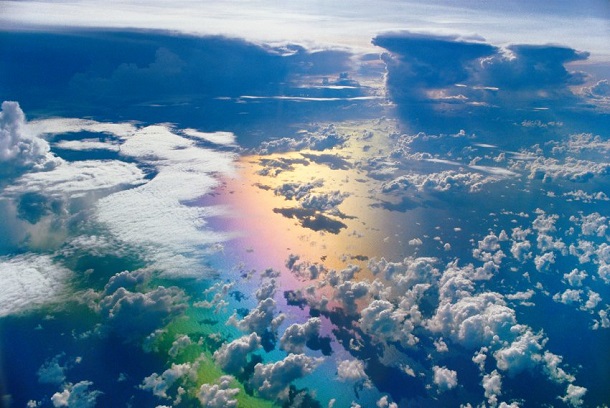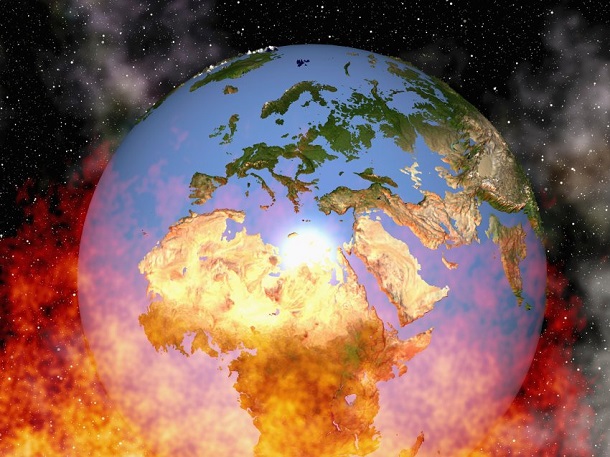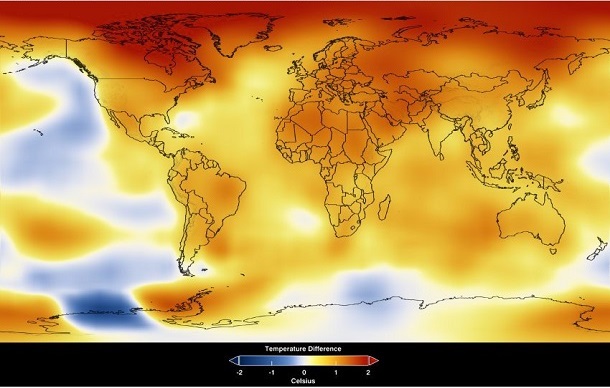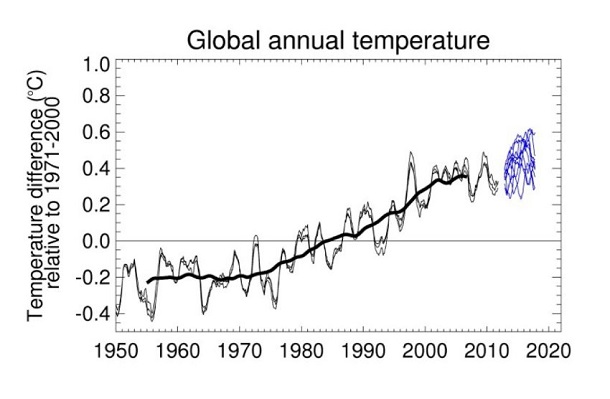The UN warns in her new climate report before a very rapid rise in sea level. It threatens heat waves, many glaciers could completely disappear, for regions such as Germany, the researchers say more heavy rain expected. The key findings in the survey.
Five years ago, the major project was launched, now the fifth UN report on the scientific aspects of climate change is finished. 840 scientists from 38 countries have seen thousands of studies to determine the state of knowledge about the environment. Nearly 55,000 critical comments were evaluated by more than a thousand experts.
For 10 clock this Friday is the UN IPCC in Stockholm the mammoth thousand-page summary of the work before, was negotiated into the wee hours. UN Secretary General Ban Ki-moon is expected in Stockholm to take a position.
Since Monday, government officials and researchers have struggled to every word of the 30-page résumés, which is intended to represent the results of climate policy-relevant research. The report itself will be released Monday. “Climate change continues unabated,” says the Chinese IPCC chief negotiator Qin Dahe.
World Climate Change:Here are key findings of the UN Climate Reports:
* Since the beginning of the 20th Century, the air has warmed by 0.9 degrees in global average, snow and ice have melted to a considerable extent, the sea level has risen 20 centimeters since then, in line with UN pessimistic forecasts. The past 30 years have been at least in the northern hemisphere probably the warmest 30 years since the High Middle Ages, when it was similarly mild, at least in some regions, such as today. In the past 15 years the average global temperature near the ground is not increased further.
* Despite this break, move on climate change, says the IPCC snow and ice thaw to a considerable extent. With few exceptions, all surveyed glaciers shrink, although there are no data from most glaciers over time so that no development can be described in them.
* Satellite measurements of the gravity nevertheless show that Greenland has lost six times 2002-2011 about more ice than in the years between 1992 previously to 2001. Corresponding measurements demonstrate that the Antarctic ice loses more wins than snow. The losses probably sourced from West Antarctica, which juts like a finger to the continental north.
* In the sea ice shrinks: The Scholl carpet on the Arctic Ocean has become dramatically thinner in the summer of 2012, its expansion even reduced to half the usual for this time of year mid-century cover. Probably so close that climate scientists, was the Arktiseis since at least 2000 years in the Roman climate optimum not so thin. Sea ice off Antarctica, however, has grown slightly over the past decades for unknown reasons.
* Also in mid-latitudes the snow melts. In March and April fall on the northern hemisphere due to the heating considerably less flakes, reported by the IPCC. All year round frozen ground thaws in some places: in the north of Russia, the thickness of the permafrost is shrinking.
The cause of climate change is mainly carbon dioxide (CO2), the man with bubble gases into the air. The IPCC is thereby “95 percent sure”, in the previous report, the safety was still at 90 percent. The number is not based on a statistical calculation, but on a vote among experts.
The radiation effect of CO2’m in good agreement with the temperature rise of the past decades, say the experts: The gas keeps solar radiation back into the atmosphere. Would double the amount of CO2 in the air would increase the temperature of chemical experiments, according to a degree. The warmer air would evaporate more water, which would heat the air as a kind of steam bell on.
Which the effect is deemed to be the core issue of climate research. The so-called climate sensitivity estimates of the UN climate report to 1.5 to 4.5 degrees – so strong would increase the air temperature due to water vapor, the amount of CO2 would double. The margin has been slightly revised due to recent climate change compared to the last IPCC report in 2007 down.
The CO2 emissions from factories, cars and power plants have increased in just the past eight years to about half. Yet pause the heating of the air: In the past 15 years is the global average surface temperatures in depending on the measuring range either do not (according to British Met Office), or increased by 0.05 degrees (according to the U.S. American weather service). However, this period saw the warmest years ever recorded mid-19th Century.
Climate models would not expect the break, notes the UN report. The causes are unclear, various effects such an extraordinary weakness of the sun along with cooling ocean currents come into question.
Otherwise, as stated by the IPCC, would naturally influences the climate since the mid-20th Century, but little changed, its effect lies 0.1 to -0.1 degrees. Since 1986, satellites accurately measure the solar activity, only small effects of their short-term climate variations in activity were observed, states the UN report. However, there is a need for research that the radiation could not produce clouds.
Clouds are still the largest air puzzle. The cooling effect of its stark shadows everyone knows. High clouds, however, retain heat in the air, they warm the earth. Probably outweighs the thermal effect, sums up the IPCC. But clouds are the great unknown, they fall through the cracks of the climate models. There was “low confidence” that clouds could be adequately simulated the climate report stated.
As an artificial opponent had sulfur particles from exhaust gases of the greenhouse gases that provide in recent years, especially in Asia for smog. The veil would but the warming slowed in the seventies in Europe before here sulfur filters were assembled in factories.
That climate change goes further, showing mainly in the oceans, in contrast to the air became warmer in recent years, reports the UN climate panel. 90 percent of solar heat entering the oceans. The oceans have warmed continuously, provides the firmly IPCC. Measurements in the oceans, however, are far more patchy than on land, especially at greater depths. Due to heat expansion and melting ice raise the ocean for about 20 years to three millimeters per year, as soon as least between 1920 and 1950.
A second marine threat is invisible: the greenhouse gas carbon dioxide (CO2) also gets into the oceans, where it connects to form carbonic acid. The pH is a measure of the acidity had already fallen slightly, the seas would therefore acidic, the IPCC reports. Therefore, shells, corals and other organisms fall it probably already harder to form their calcite shells.
Depending on how severe detainment of CO2 emissions, the more serious will fail future warming, the IPCC warns. The consequences would “change the environment in a way that does not happen for hundreds or thousands of years,” it says in the summary of the climate reports. This time a civilization of more than seven billion people would be affected in contrast to previous climate changes, however.
The greatest risks are, according to the IPCC:

– Unmitigated emissions of greenhouse gases would probably heat the air by the end of the century by about 3.7 degrees.
– It threatens more heat waves.
– Rising sea levels could go centuries. By the end of this century, a swell threatened to 26-82 centimeters, depending on how much greenhouse gas warms the world, the IPCC warns. Thus, the IPCC has raised its forecast of the last report when he ansetzte the contribution of melt water of ice sheet due to uncertain data small. Once again, the IPCC Summary banished from his extreme scenarios. Some researchers believe that the Council carefully to judge.
– Many glaciers that serve as drinking water sources, could completely disappear.
– The oceans threaten to sour, it would be difficult for organisms to form their shells.
– Climates may shift. In the subtropics and adjacent regions such as the Mediterranean, there is therefore likely to be more frequent droughts.
– In the tropics and mid-latitudes, such as Germany, there would be more heavy rain.
Instructions are not the UN Climate Panel. The panel will demonstrate only the knowledge about the climate. What conclusions does the policy decides to UN climate summits which meet annually for 21 years. The next will be held in Warsaw in November.




